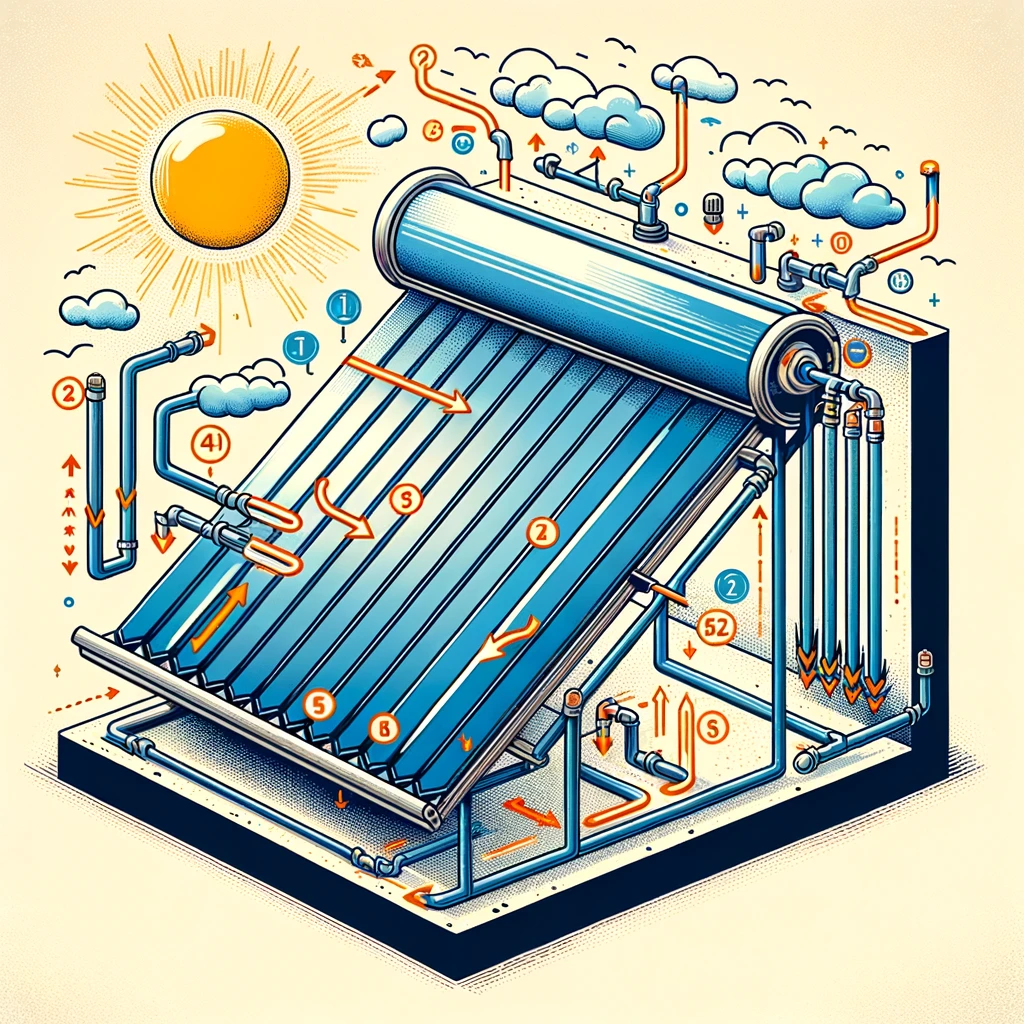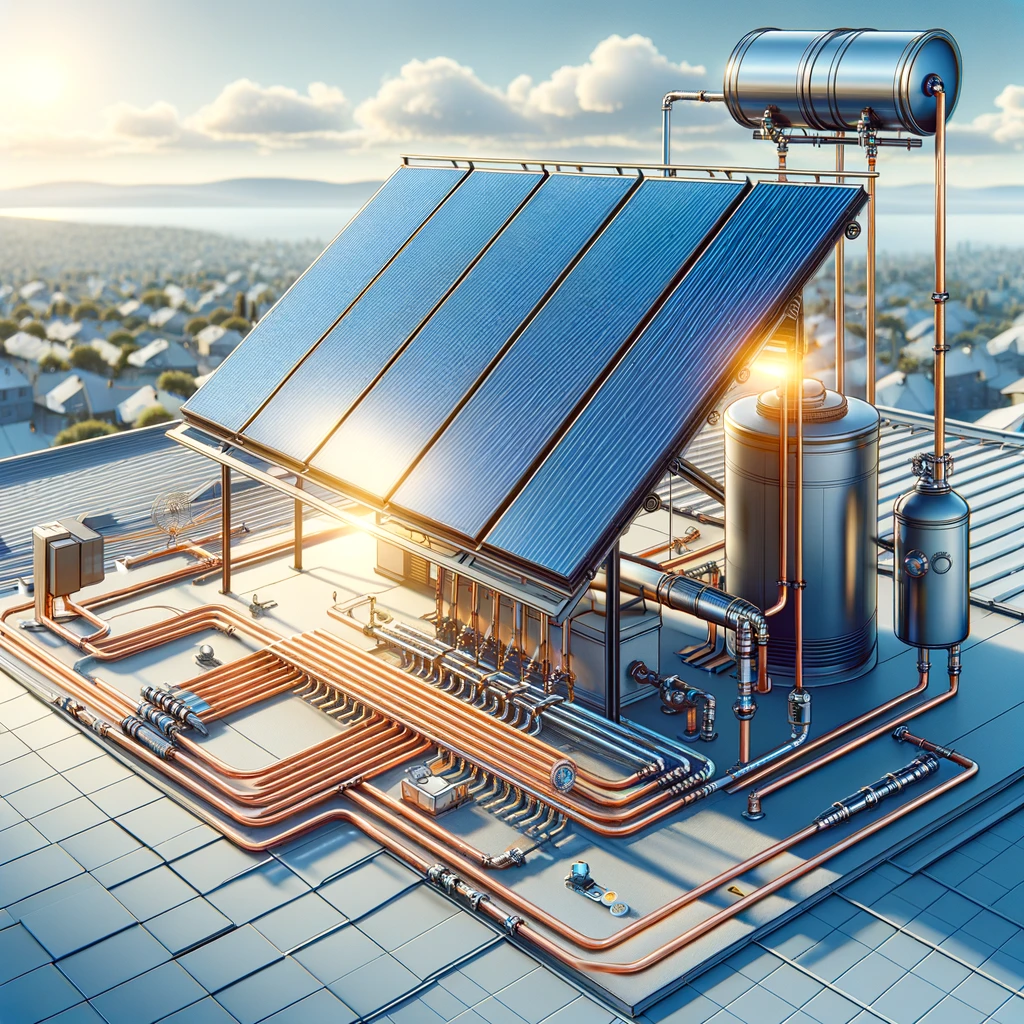There are mainly two types of fluids used in solar collectors: water-based fluids and heat transfer fluids (HTFs).
Water-Based Fluids: In many solar heating applications, particularly in domestic hot water systems, water acts as the heat transfer fluid. Water is an excellent heat transfer medium due to its high specific heat capacity, which means it can absorb a lot of heat without significantly increasing in temperature. However, water can freeze at 0°C (32°F), which poses a risk in colder climates. To mitigate this, antifreeze solutions can be added to the water.
Heat Transfer Fluids (HTFs): For higher temperature applications or systems located in freezing temperatures, specially formulated heat transfer fluids are used. These fluids have a lower freezing point than water and can operate at higher temperatures without boiling. Common types of HTFs include glycol-based fluids, such as ethylene glycol or propylene glycol, which are mixed with water to create an antifreeze solution. Other types of HTFs can include synthetic oils, which have excellent thermal stability at high temperatures.

Properties of Fluids in Solar Collectors
The choice of fluid in a solar collector system depends on several factors, including the temperature range of operation, the climate, and the specific application. Key properties to consider include:
- Freezing Point: The fluid must have a low freezing point to prevent freezing in the system, which could cause damage.
- Boiling Point: The fluid should have a high boiling point to operate efficiently at high temperatures without vaporizing.
- Specific Heat Capacity: A high specific heat capacity allows the fluid to absorb more heat energy without a significant increase in temperature.
- Viscosity: Lower viscosity fluids are preferable as they flow more easily, reducing the energy needed for pumping.
- Corrosiveness: The fluid should not corrode the materials in the solar collector system.
- Toxicity and Environmental Impact: Ideally, the fluid should be non-toxic and have minimal environmental impact in case of leaks.
Applications of Fluids in Solar Collectors
The choice of fluid impacts the design and efficiency of a solar thermal system. Water-based fluids are commonly used in residential solar water heating systems due to their simplicity and cost-effectiveness. However, in regions with colder climates, antifreeze solutions are necessary to prevent freezing.
Heat transfer fluids are used in applications requiring higher temperatures, such as solar thermal power plants, industrial process heat, or systems that operate in freezing conditions. These fluids allow solar collectors to operate efficiently by maintaining the necessary temperature differential between the collector surface and the ambient temperature.
The fluid in a solar collector is a vital component that significantly affects the system’s performance and efficiency. Whether it’s water or a specialized heat transfer fluid, the choice depends on the system’s requirements, including the operational temperature range, climate, and intended application. Advances in fluid technology continue to improve the efficiency and versatility of solar thermal systems, making solar energy a more accessible and sustainable option for heating and power generation worldwide.

